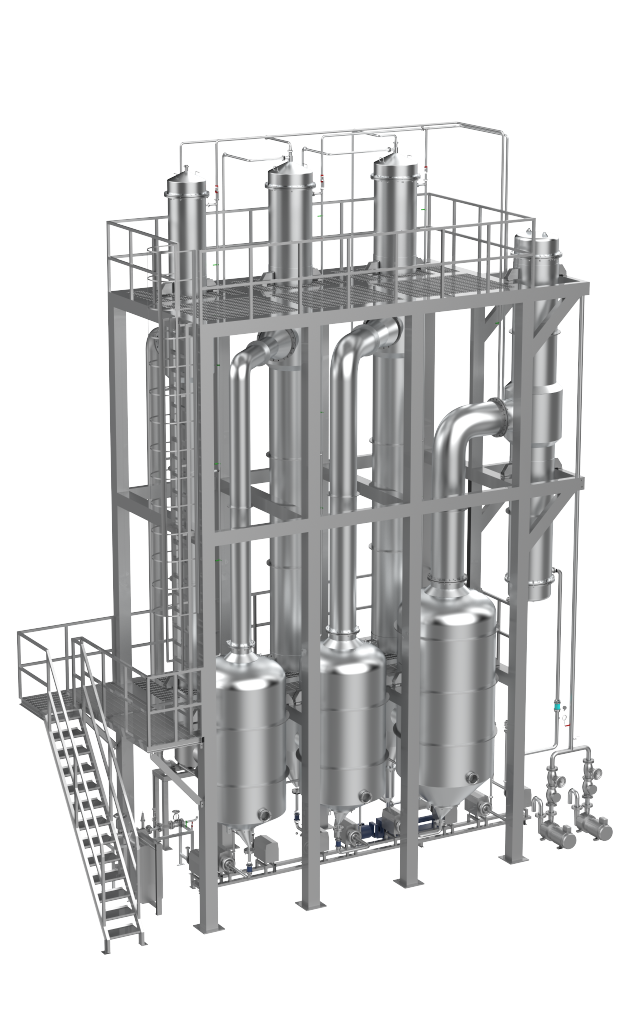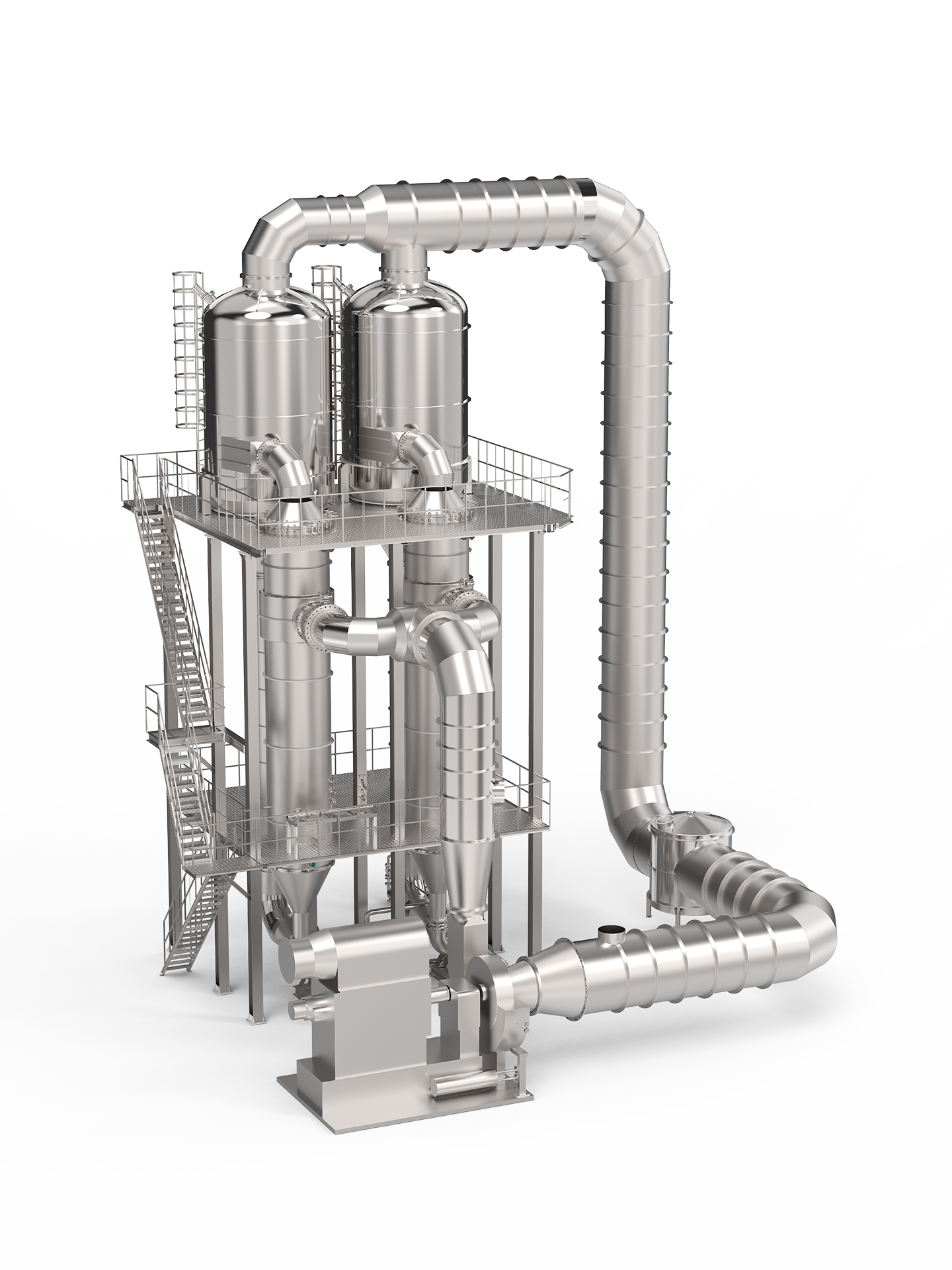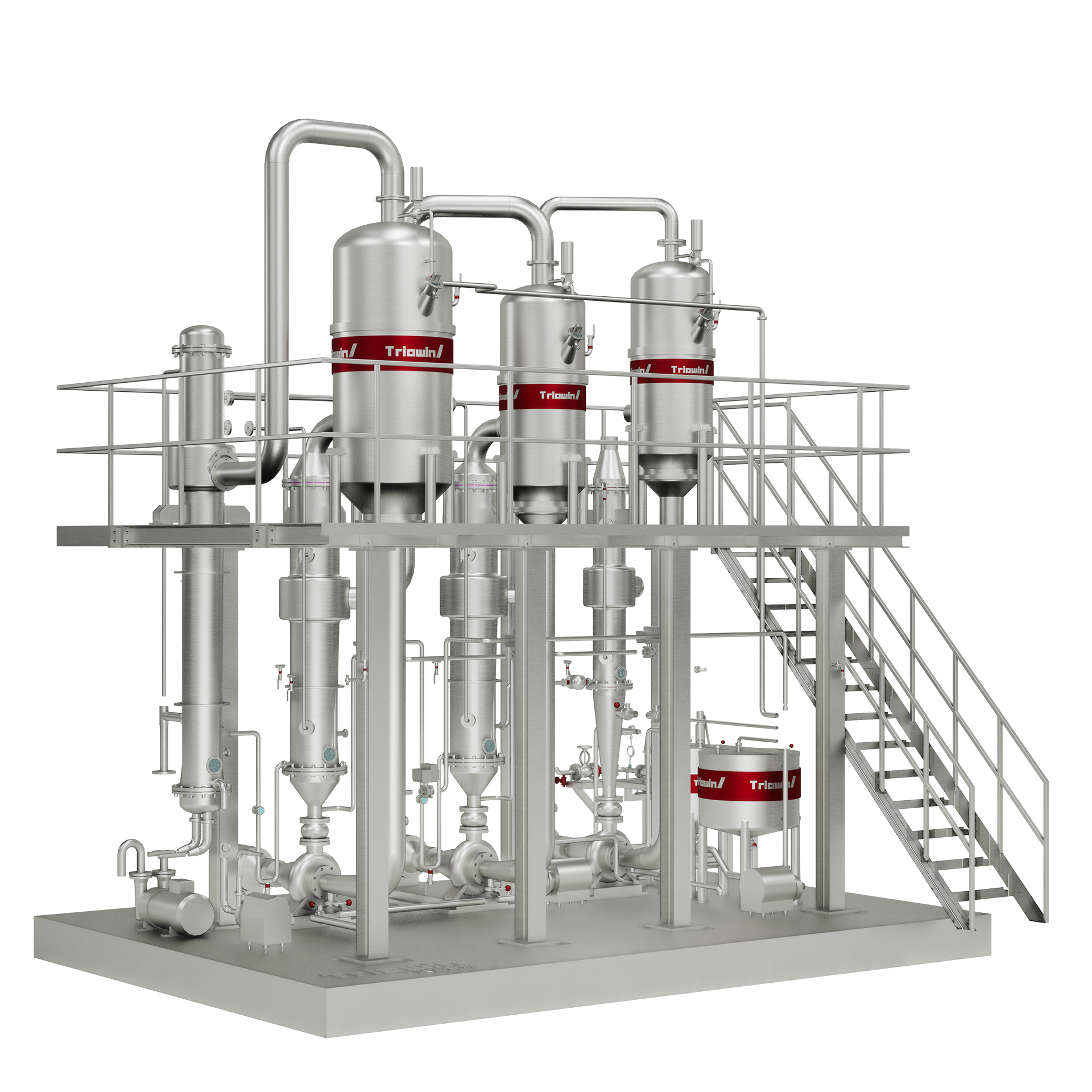Triowin Equipment manufactures concentration equipment that can be selected based on the processing materials, including various evaporation methods such as falling film evaporators, forced external circulation evaporators, MVR evaporators, and others. These devices are widely used in fields such as biotechnology, pharmaceuticals, food and beverage, daily chemicals, environmental engineering, and waste liquid recovery. Different concentration equipment and methods are chosen based on the material's flow properties and the desired concentration level.
Solutions
- Solutions
-
Industry Solutions
- Project Cases
-
Industry SolutionsDelivering One-stop Solutions for Intelligent Production
-
Project CasesLeveraging Intelligence for Sustainable Productivity in Future Factories

Flagship Products
Flagship Products
Food Engineering
Biological Engineering
Biological Fermentation System
TARS cell perfusion regeneration system
5L bioreactor system
Parallel bioreactors
Duplex bioreactor system
Multi-parallel fermentation system
Two-stage bioreactor system
Multi-stage scale fermentation
Continuous disinfection system of culture medium
Manufacturing of Large Fermentation Equipment In-house
Liquor Engineering
Laboratory & Pilot Plant
Exchanger
MINI Tabletop Sterilizer
PT-20T Mini UHT Tubular Sterilizer
PT-20P Mini UHT Plate Sterilizer
PT-SS Mini UHT Scraper Sterilizer
PT-30DT Mini UHT Steam Injection Sterilizer
PT-50DT Mini UHT Steam Injection Sterilizer
PT-100T Pilot Tube Sterilizer
PT-20C Mini UHT Tube-Plate Hybrid Sterilizer
Margarine and Spreadable Fat Processing Equipment


























